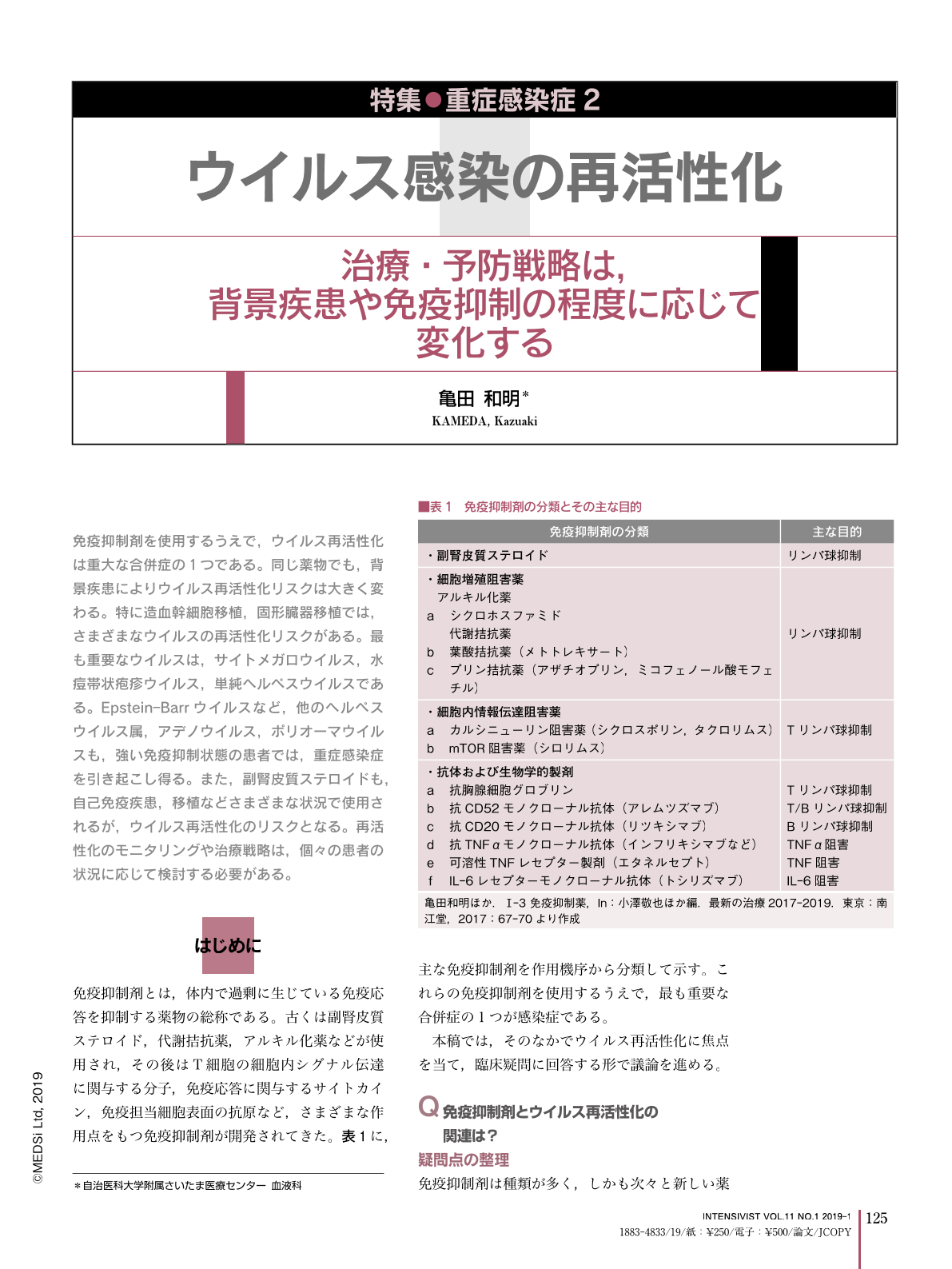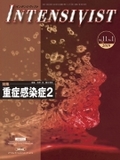Japanese
English
- 有料閲覧
- Abstract 文献概要
- 1ページ目 Look Inside
- 参考文献 Reference
免疫抑制剤を使用するうえで,ウイルス再活性化は重大な合併症の1つである。同じ薬物でも,背景疾患によりウイルス再活性化リスクは大きく変わる。特に造血幹細胞移植,固形臓器移植では,さまざまなウイルスの再活性化リスクがある。最も重要なウイルスは,サイトメガロウイルス,水痘帯状疱疹ウイルス,単純ヘルペスウイルスである。Epstein-Barrウイルスなど,他のヘルペスウイルス属,アデノウイルス,ポリオーマウイルスも,強い免疫抑制状態の患者では,重症感染症を引き起こし得る。また,副腎皮質ステロイドも,自己免疫疾患,移植などさまざまな状況で使用されるが,ウイルス再活性化のリスクとなる。再活性化のモニタリングや治療戦略は,個々の患者の状況に応じて検討する必要がある。
Viral reactivation is a serious complication associated with immunosuppressive therapy. Both the type of drugs and the patients' background influence the risk of viral reactivation. Patients who undergo solid organ and hematopoietic stem cell transplant are especially susceptible to various viruses. Among them, cytomegalovirus, varicella-zoster virus and herpes simplex virus are the most important pathogens. In addition, extensive immunosuppressive treatment against graft rejection or graft-versus-host disease can result in reactivation with Epstein-Barr virus, human herpes virus-6, -7, -8, adenovirus and polyomavirus. Corticosteroids remain a part of most immunosuppressive regimens for autoimmune diseases and transplantation. Higher cumulative doses and a longer duration of corticosteroid therapy increase the risk of viral reactivation. Preventive strategies such as universal prophylaxis or preemptive therapy should be considered for “high-risk” patients. Some viral reactivations are asymptomatic and do not require antiviral treatment. However, antiviral drugs can induce serious adverse effects. Preventive and therapeutic treatment for viral reactivation should be given according to the individual patients' immunological status.

Copyright © 2019, MEDICAL SCIENCES INTERNATIONAL, LTD. All rights reserved.


